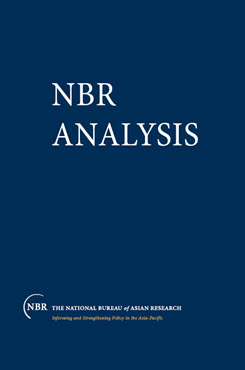In NBR Analysis vol. 2, no 1
The Asia-Pacific Region in the Emergent World Economy
The Asia-Pacific region is the most rapidly growing regional economy in the world. Its future will be profoundly influenced not only by intraregional developments, but also by external developments in a larger world economy that is continuing to undergo very rapid change.
The Asia-Pacific region is the most rapidly growing regional economy in the world. Its future will be profoundly influenced not only by intraregional developments, but also by external developments in a larger world economy that is continuing to undergo very rapid change. National economies are being integrated at an astonishing rate in the areas of trade, finance, and production. Today, in many economic sectors, a world market serviced by international as well as by domestic corporations is replacing a world economy composed by relatively isolated national markets. Over the past decade and a half, deregulation and technological developments have integrated financial markets into a truly global system. The multinational corporation is becoming the principal mechanism for the allocation of investment capital and the location of production throughout much of the world. The North Atlantic-dominated world economy of the past is rapidly being displaced by a truly global economy in which dymanic non-European economies of East Asia and elsewhere have emerged as independent and self-generating centers of economic growth and technolocal innovation. This process of economic globalization and internationalization of production is rapidly integrating national economies into a highly interdependent world economy.
At the same time that this process of globalization is taking place, economic nationalism and economic alliances among states and corporations are rapidly expanding and being used to influence-and in some cases to determine-market relations and economic outcomes. As tariffs and formal trade barriers have come down as a result of successive rounds of trade liberlization carried out under the auspices of the General Agreement on Tariffs and Trade (GATT), nontariff barriers and informal arrangements restricting free trade have proliferated, a development that the French euphemistically call “organized free trade.” In the area of international finance, resistance to the further integration of capital markets is surfacing, and barriers to market entry have begun to rise, in particular against the Japanese. While multinational corporations are internationalizing production, alliances among individual states, among states and national corporations, and especially among corporations themselves have become increasingly significant for the orgnization and functioning of the international economy.


